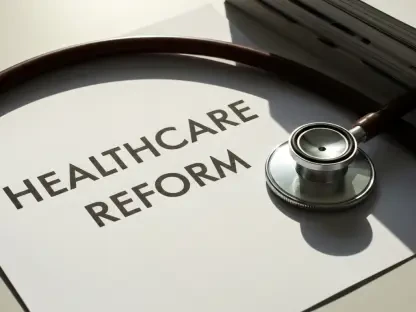The landscape of pharmaceutical advertising in the United States, with its $10 billion annual expenditure, stands on the brink of potentially transformative shifts. U.S. Health and Human Services Secretary Robert F. Kennedy Jr. is ardently pursuing strategies to elevate the costs of direct-to-consumer pharmaceutical advertising, in a landscape where the U.S. remains a rare example of a nation permitting such practices. Despite the improbability of a total ban due to legal constraints, Kennedy’s plan presents a pivotal move that could redefine the fiscal dynamics within the industry. This attempt, while focused on increasing spending for pharma companies, simultaneously targets a significant revenue stream for media platforms, which derive a substantial 20% of their ad revenue from this sector. As the policy landscape evolves, legal challenges are an expected consequence, not only from pharmaceutical entities but also from advertising and media groups wary of economic fallout.
Challenges and Legal Hurdles
Prior legislative efforts to curb pharmaceutical advertising have faltered in the face of legal and political complexities. Historical endeavors, such as those led by Senators Bernie Sanders and Angus King, failed to progress due to insufficient bipartisan backing. The historical context underscores the challenging nature of implementing regulatory changes in an industry fortified by robust lobbying and strategic political alliances. Health analyst Chris Meekins highlights the multifaceted pressures currently facing pharma, including the specter of potential tariffs, decelerated drug approval processes, and the ongoing debate surrounding Medicare negotiations. Pharmaceutical companies tread carefully, keenly aware of the implications of direct opposition to federal regulations, which could yield investor unrest, devaluation, and a possible exodus from the sector due to perceived market instability.
Economic Impacts and Strategic Positioning
The pharmaceutical industry’s complex relationship with federal authorities highlights the interplay between economic impact and strategic positioning. Meekins reveals the paradox for major drug companies, noting their powerful lobbying efforts while acknowledging the risks of long-term government confrontations. Investors, wary of the sector’s volatility, see ongoing disputes as harmful to stable company valuations. Balancing the necessary revenue streams with higher costs from strict policies demands strategic reevaluation. This negotiation between government mandates and industry interests reflects broader dynamics, where regulatory measures weigh consumer protection against corporate gains.
Kennedy advocates reevaluating direct-to-consumer ads, emphasizing broader implications. Future strategies may involve innovative models with federal entities or exploring alternative revenue aligned with regulatory changes. These efforts could significantly transform industry practices and consumer engagement in healthcare. Regulatory pressure, legal challenges, and economic concerns continue to shape this critical sector’s dynamic narrative.









